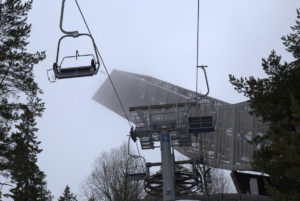
One of the key recommendations of all guides to Norway is to eat breakfast at the hotel (when included) since food is pretty expensive up here. After we gobble up another big buffet breakfast we head out once more to see what Oslo has to offer.
Today has three sights on the schedule and we have a public transport day-pass to get us there. We hop on bus #30 get us to the The Viking Ship Museum (Vikingskiphuset) which is located on the Bygdoy peninsula, about 30 minute ride from Central Station.
Navigating the transport system is simple with real-time departure signs at each stop station updates on board the buses, trams and trains. After an easy journey joined by a group of kindergartners and their chaperones (plus a few other tourists), we reach the museum.
The Viking Ship Museum is part of the University of Oslo, and houses archaeological finds from Tune, Gokstad (Sandefjord), Oseberg (Tonsberg) and the Borre mound cemetery. It is most famous for its whole Oseberg ship, excavated from the largest known ship burial in the world. In addition to two other boats, the exhibit also displays Viking Age sledges, beds, a horse cart, wood carvings and other grave artifacts.
We skip the Polar Ship Farm, the Maritime Museum and the Norske Folkemuseum (all located in the area here as well) as we have other sights in our list to get to. So back on the bus it is and one transfer later we disembark at Vigeland Scultpure Park. Technically not its own park, but rather a permanent installation of sculptures (created by Gustav Vigeland), larger structures and bridges within Frogner Park.
The sculptures were created between 1924 and 1943. The installation represents the world’s largest sculpture park made by a single artist. Froger Park is the most popular tourist attraction of Norway with 1M-2M visitors annually, and open to the public all the time. The sculpture area in Frogner Park features 212 bronze and granite sculptures all designed by G. Vigeland. The bridge was the first part to be opened to the public in 1940 and is lined with 58 sculptures (including the famous “Angry Boy”) along its 328 ft span.
Back on the tram we head up the hill towards our 3rd and final sight of the day, and my personal favorite: Holmenkollbakken Ski Museum and Tower! The train winds its way up the mountain and takes on skiers and sledders all headed to the top to cross-country ski or sled down again. You can pretty much ski in the city, a nice perk of living in Oslo!
Holmenkollbakken is a large ski jumping hill located at Holmenkollen in Oslo. It’s hill size is HS134, has a construction point of K-120 and a capacity for 70K spectators. Not sure what all that means? Watch the next ski jumping event this winter! The hill has hosted the Holmenkollen Ski Festival since 1892, which since 1980 has been part of the FIS Ski Jumping World Cup and 1983 the FIS Nordic Combined World Cup. It’s also hosted the 1952 Winter Olympics and FIS World Ski Championships in 1930, 1966, 1982 and 2011 when Austrian Ski Jumper Andreas Kofler set the current hill record of 141m (463 ft), breaking his own record from the year prior. The hill has been rebuilt 19 times; including several important upgrades. Between 2008 and 2010, the entire structure was demolished and rebuilt. The hill is part of Holmenkollen National Arena, which also hosts cross-country and biathlon venues which also includes the normal hill Midstubakken.
The Ski Museum was founded in 1923 and is the world’s oldest ski museum. The private collection of Hjalmar Welhaven formed the base of the antique and historic skis on display. The museum shows over 4,000 years of skiing history starting with rock carvings from the Stone Age! Also included are skiers and skis from the Viking Age and equipment from the Polar expeditions of Fridtjof Hansen and Roald Amundsen. My personal highlight is to get the opportunity to go to the top of the ski jump tower! A small elevator runs along the side of the jumping hill structure and every meter in gain makes the view that much scarier! Once on top, you are at the same spot as where the ski jumpers would start from. Looking down the run is not for the faint-hearted! The sun has finally come out and the wind blows away the last bit of fog to present a beautiful view over the Holmenkollbakken area, the city of Oslo and the Oslofjord in the distance.
After so much skiing history and information, it’s hard to walk back to the train. I’d rather than just putting on ski gear and hit the slopes! But jet lag is kicking in as the evening approaches, so we return to the train station (less than a half mile from the tower!) and make it back to the hotel is just about a half hour. Dinner and nap-time await…



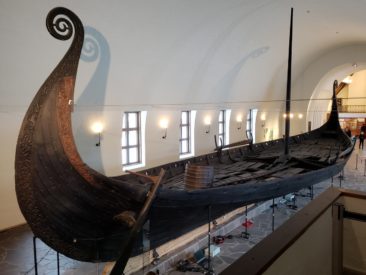
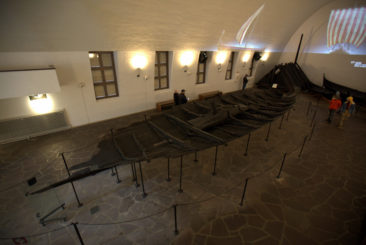
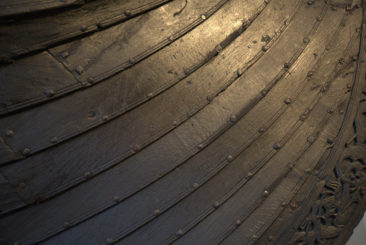
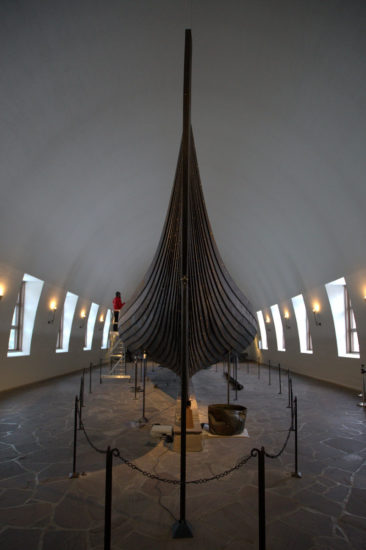

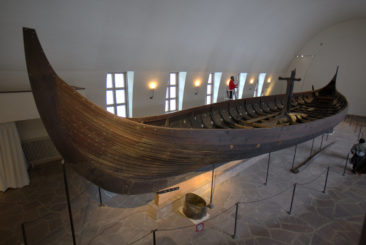
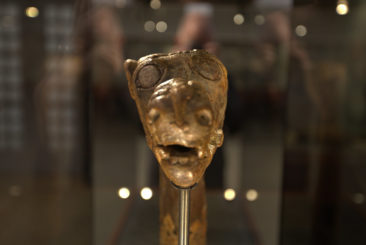
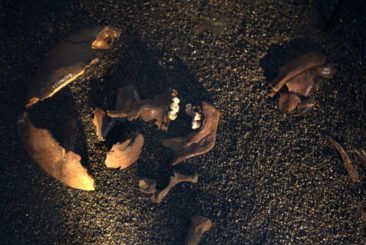
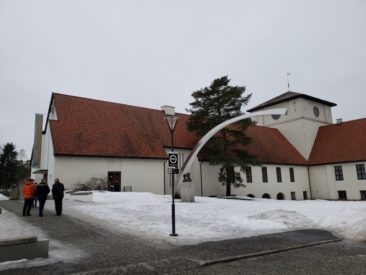
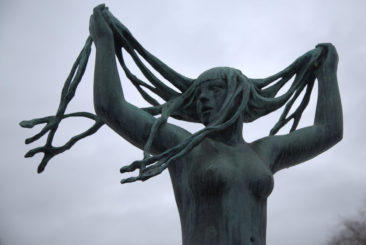
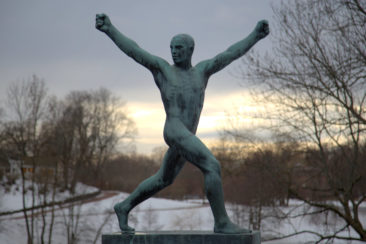
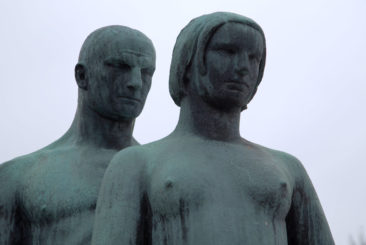
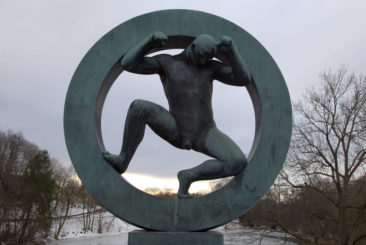
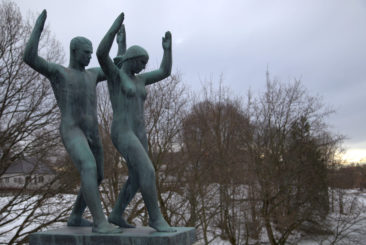
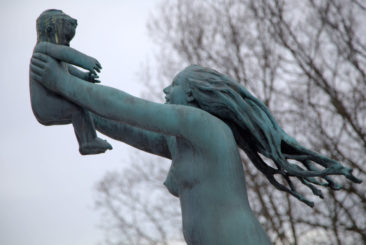

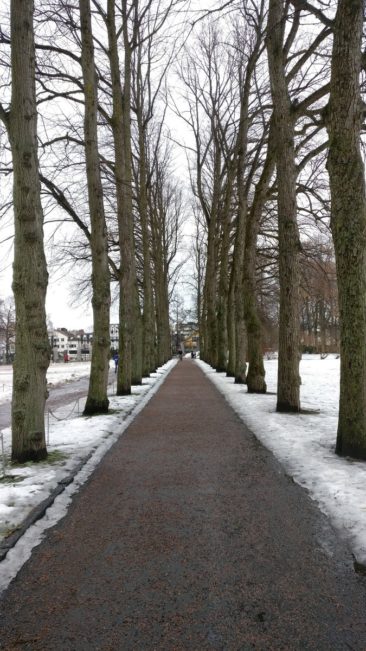
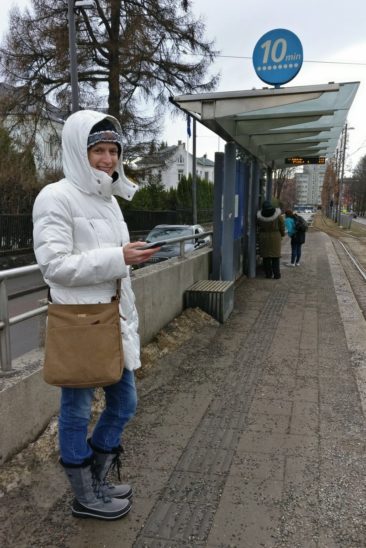


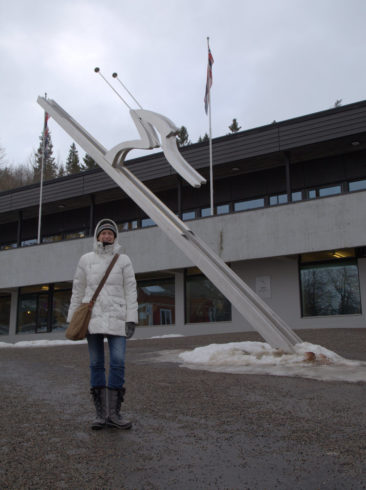
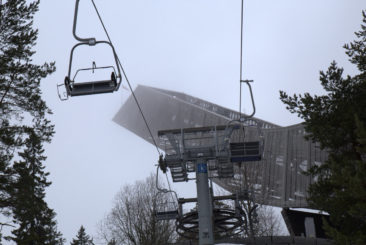




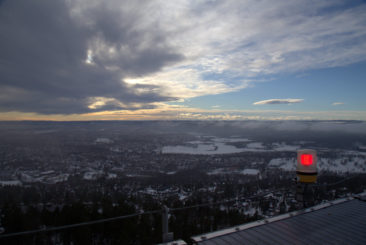
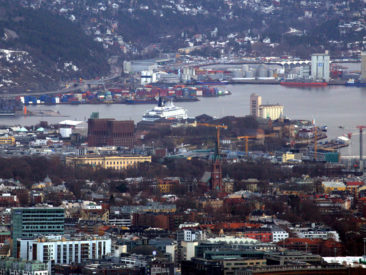
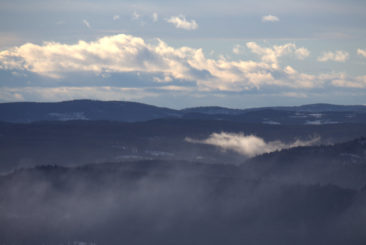

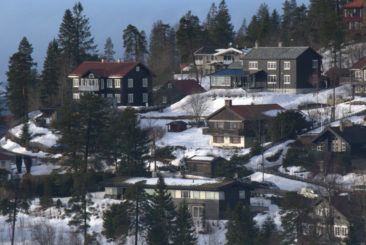

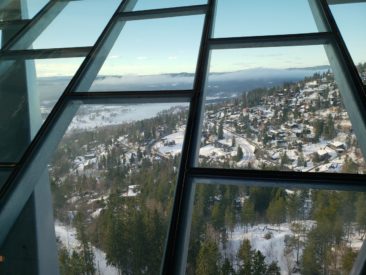
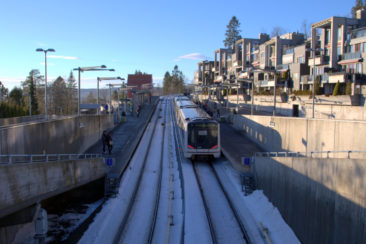
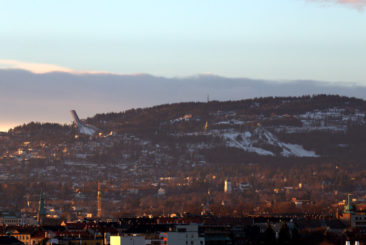


Sherrie
Wow, beautiful set of photos and information.
Keith
Can you guys slow down? I’m exhausted just reading about everything you’re seeing and doing!
James
I didn’t see you guys posing under the couples statue 🙂
Is cool in FL too. About 86 today